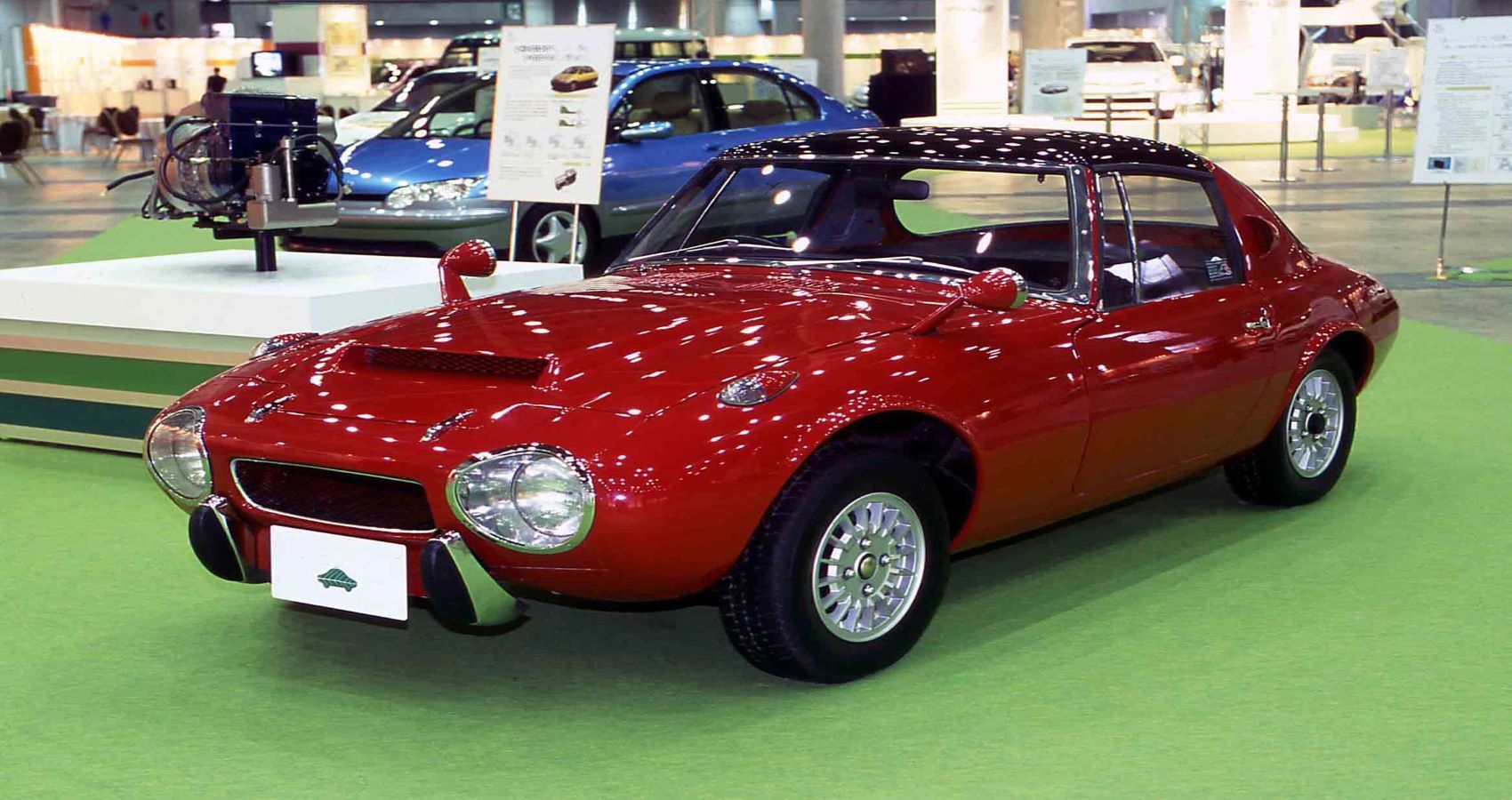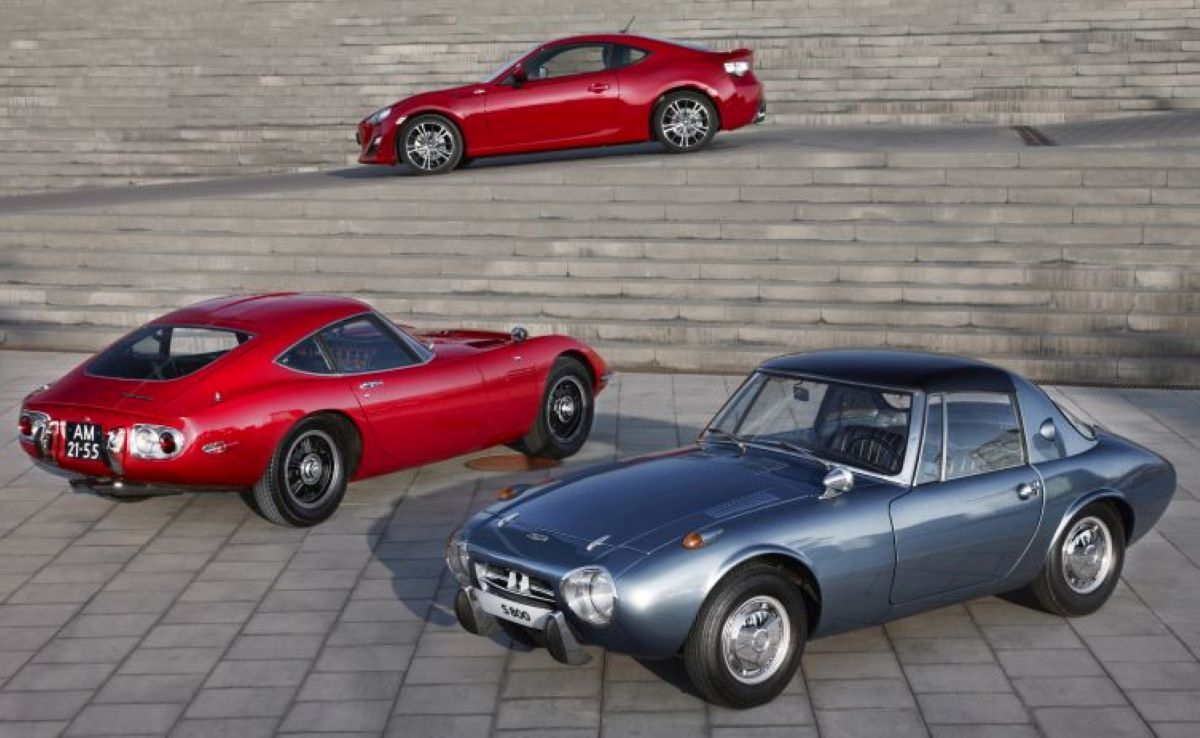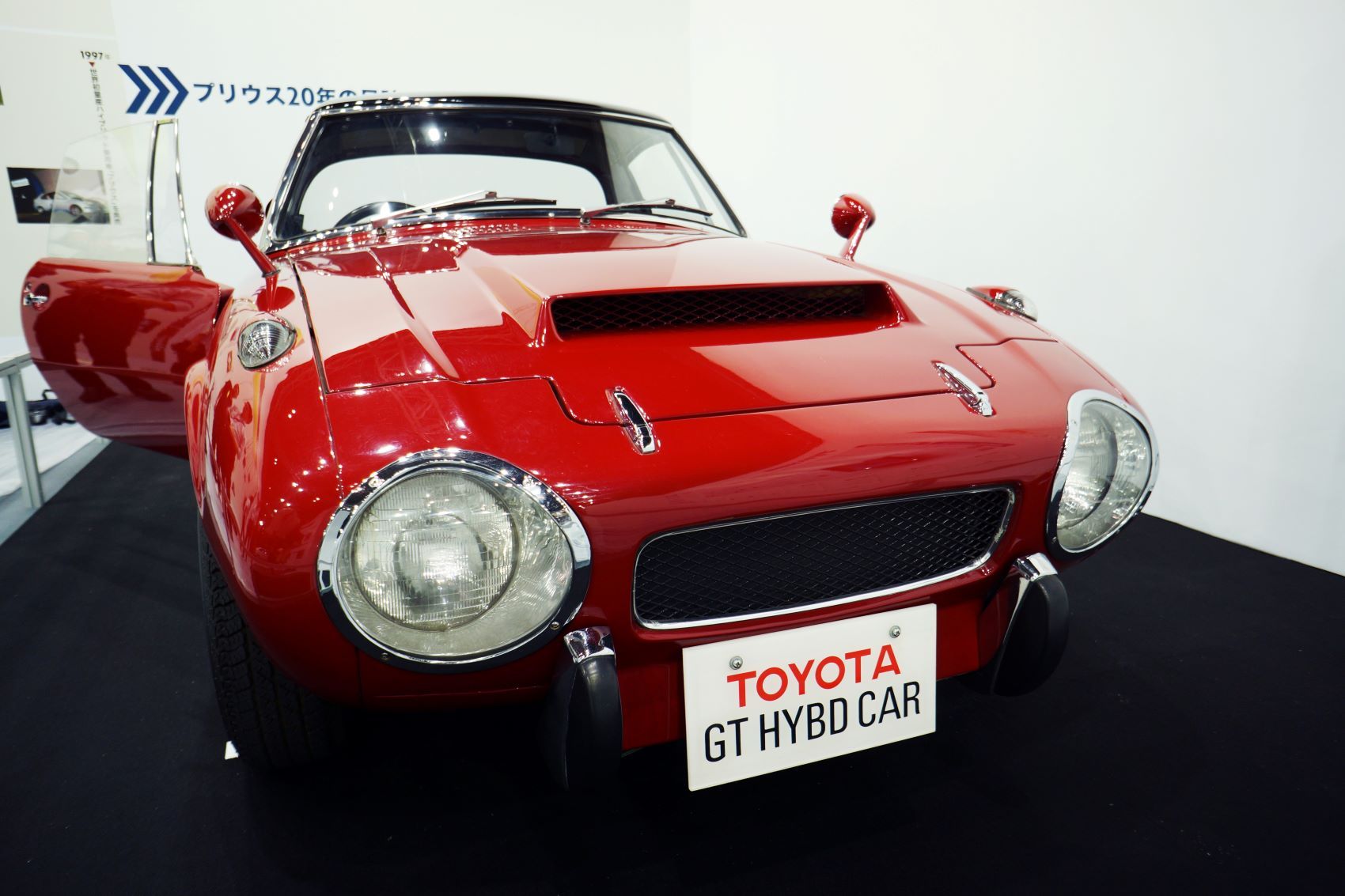The Toyota Motor Company in the 1960s was not the global automotive giant we know today. Company engineers were keen to demonstrate their ability and began developing the exotic Toyota 2000GT sports car in 1965. However, before the stunning 2000GT appeared, Toyota built another significant sports car that is often overlooked – the Sports 800. Not only was the Sports 800 Toyota’s first-ever production sports car, but it would also become the inspiration for future Toyota models such as the Celica, MR-2 and the GT86.
Toyota’s small two-seater became affectionately known as the ‘Yota-Hatchi’ in Japanese or ‘Toyota 8’. Built over a short production period between 1965 and 1969, a total of only 3,131 units were produced. Aeronautical engineer Tatsuo Hasegawa and lead designer for Nissan Motors, Shozo Sato, cleverly penned the aerodynamic design of the Sports 800, an update of their earlier prototype, the Publica Sports Concept, which made an appearance in 1962 at the Tokyo Auto Show.
Toyota Sports 800 History
Designed to compete against the Honda S800 sports car, the Toyota Sports 800 was primarily developed for Japan. Indeed, aspirations for the car never extended beyond the Japanese domestic market. Therefore, the majority were right-hand drive. However, Toyota produced around 300 left-hand drive cars which sold in American occupied Okinawa. At the time, cars in Okinawa were usually driven on the right side of the road. What’s more, Toyota shipped forty of these lightweight cars to dealers in the U.S. as a marketing exercise, though didn’t generate consumer interest. As a result, Toyota decided not to export the Sports 800 to the U.S. With only a small number of units produced, around 10 percent of the original cars remain. Factor in the limited run of left-hand drive cars, and this would equate to around 30 LHD models in existence today.
The Design was not just superficial. Indeed, the lightweight Sports 800 was also relatively powerful and fun to drive with an impressive fuel consumption recorded at 73 MPG. The Sports 800 entered into the All-Japan Club Race in 1966 and won the title by finishing first Place. Moreover, the car also participated in the Fuji 24-hour race alongside its more powerful brother, the Toyota 2000GT. Thanks to its reliability and efficiency, the Sports 800 finished third place in 1967, behind the two Toyota 2000GTs that won the race.
Twenty years before the Toyota Motor Company became automotive leaders in Hybrid technology, with the introduction of the Prius, the Japanese manufacturer introduced a one-off concept Hybrid Vehicle in 1977 based on the Sports 800 with a gas turbine. This undoubtedly became the starting point for Toyota’s development of future Hybrid Vehicles.
Although the Sports 800 has a strong following in Japan, it hardly penetrated the US market. It’s true to say, it was somewhat overshadowed by the gorgeous 2000GT. What’s more, clean examples of this extremely rare vehicle are hard to source, with many parts unobtainable. According to Classic.com, the average price of a Toyota Sports 800 is around the $40,000 mark. That’s if you can find one!
The Sports 800 Featured A Removable Targa Top
The innovative Sports 800 was a straightforward proposition with simple mechanics. Powered by a 790cc, air-cooled two-cylinder boxer engine with twin carburetors, the unit proved to be pretty durable and easy to maintain. With 44 horses under the hood, the lightweight Toyota could propel to 60 mph in around 11 seconds and had a claimed top speed of 100 mph, which was impressive in the day. The engine unit may not sound powerful, however, the lightness of the car compensated for this. Back in the ’60s, a Porsche was only marginally quicker. Importantly a total curb weight of 580kg gave the car sublime handling and with the engine placed low at the front of the car, a low center of gravity. Somewhat comparable to a Lotus Elan in the day. In addition, the Yota-Hatchi was incredibly fuel-efficient with an excellent reliability record.
The Sports 800 was, no doubt, an attractive two-seater with many attributes. What's more, it looked like a baby 2000GT. However, it was cleverly constructed using high-quality weight-saving materials. To keep the car as light as possible, the designers at Toyota opted to use thin gauged steel throughout most of the body and aluminum for the doors, hood, removable roof and seat frames. What’s more, the Sports 800 was the first production car to feature a unique removable ‘Targa’ roof panel that could be cleverly stored in the trunk. This debuted two years before Porsche’s first Targa 911.
The Coolest Hybrid In The World?
Although the production of the Sports 800 ended in 1969, the small Toyota made a surprise appearance once again a decade later, at the 1979 Tokyo Auto Show, this time as a prototype hybrid car. No doubt, the super lightweight Sports 800 was the appropriate vehicle for Toyota to exhibit their Hybrid technology. The Sports 800 Hybrid GT (Gas Turbine) Concept weighed just under 1000kg and remained rear-wheel drive. The 30 horsepower (22kW) gas turbine engine fed power to a generator, which in turn fed an electric motor, paired with a two-speed transmission. Indeed, trials of this early Hybrid system only lasted until 1983.
No doubt, the ‘Yota-Hatchi’ became an important milestone in Toyota’s history.




